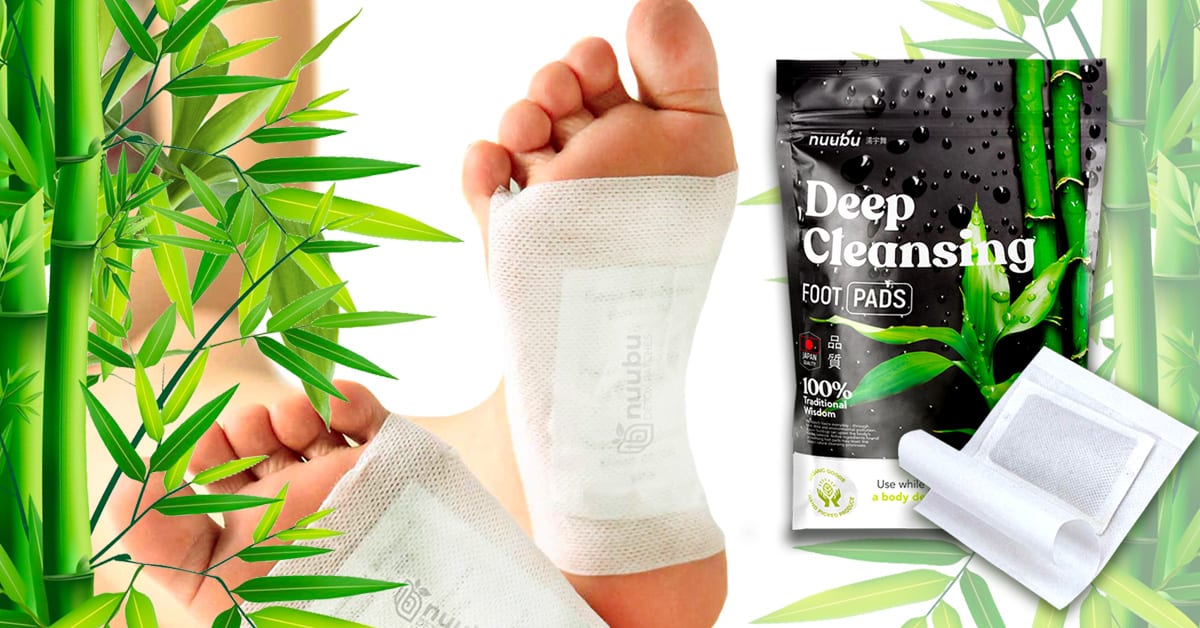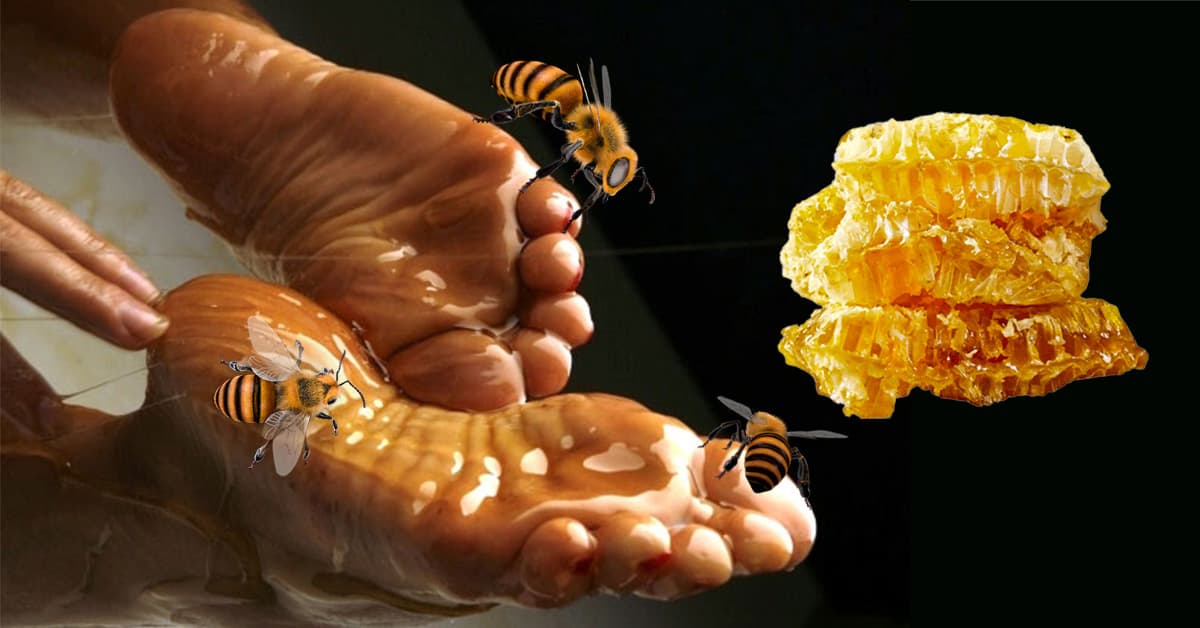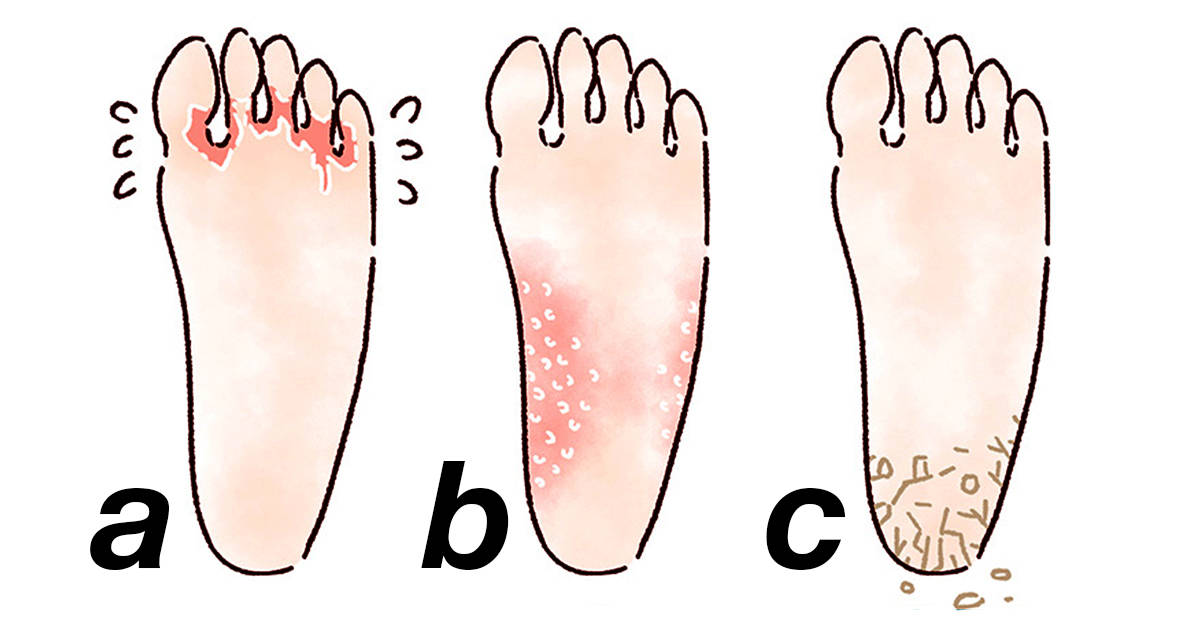While cracked feet might seem like a purely cosmetic concern, they can actually be quite troubling for several reasons. Deep cracks can be painful and uncomfortable, increase the risk of infections, and negatively affect a person’s self-confidence.
If you are struggling against cracked skin on the heels, you are not alone. According to a study published in the Journal of the American Podiatric Medical Association, cracked heel is a common condition affecting up to 20% of the adult population in the United States.
Today, we’re sharing practical home remedies to help smooth out rough heels and keep them soft, clean, and supple. Get ready to give your feet some TLC with simple soaking, scrubbing, and pampering techniques!
12 Natural Home Remedies For Cracked Feet
1. Detox Foot Pads

Detox foot pads, such as Nuubu, can be a helpful remedy for treating cracked heels. To experience the soothing and healing benefits of using Nuubu foot pads, you can make them a part of your foot care regimen. The natural ingredients in the pads ensure your feet feel soft, smooth, and healthy.
Lavender, a key ingredient in Nubbu foot pads, not only moisturizes but also possesses potent antiseptic properties, ideal for healing cracked skin. Furthermore, vinegar and ginger within these pads provide antifungal and antiseptic benefits, supporting foot health. This holistic approach to foot care offers a natural solution to address cracked heels while promoting overall foot wellness.
You can opt for foot pads enriched with healing and moisturizing ingredients such as tea tree oil, lavender, and aloe vera, renowned for their ability to soften and repair cracked heels. If you want to know what are the best detox foot pads, explore our curated selection of top-rated detox patches.

2. Foot Masks
Why spend on spa treatments when you can create luxurious foot masks at home? Say goodbye to harsh treatments and embrace natural ingredients for the ultimate pampering session. Try these DIY recipes:
First, whip up a Banana foot mask by mashing a ripe banana with oatmeal and yogurt. This concoction not only nourishes but also gently exfoliates, leaving your skin feeling soft and rejuvenated.
Try a yogurt and honey mask for cracked heels. Yogurt contains lactic acid, gently exfoliating and softening rough patches. Honey, a humectant, hydrates the skin and aids healing. Together, they offer mild anti-inflammatory properties, easing discomfort. Mix 1/4 cup yogurt and 1 tbsp honey, apply to clean, dry feet, and leave for 15-20 minutes. Rinse and pat dry for smoother heels.
Try this foot care routine with DIY masks weekly for optimal results in foot care.
3. Oatmeal Soaks
Oatmeal’s gentle exfoliation and moisture-locking properties can soothe cracked heels, especially when used regularly.
Here’s a quick soak recipe:
- Grind 1 cup oats into a fine powder.
- Fill a basin with warm water and add the powder.
- Soak feet for 15-20 minutes.
- Pat dry and apply moisturizer.
Add a few drops of tea tree oil, peppermint oil, or lavender oil to the oatmeal soak for an extra boost and to eliminate foot odor.
4. Aloe Vera Gel
Aloe Vera’s healing properties make it beneficial for cracked heels. Its anti-inflammatory and moisturizing qualities help soothe and repair dry, cracked skin. Fresh aloe gel is preferable for cracked heels as it contains higher concentrations of active compounds compared to ready-made products, offering more potent healing effects.
Applying fresh aloe gel directly to cracked heels can provide immediate relief and promote faster healing. Regular use can help soften the skin, reduce inflammation, and prevent further cracking, restoring smoothness to the heels.
5. Shea Butter Application
Shea butter boasts rich moisturizing effects, making it ideal for nourishing dry, cracked feet. Its high content of fatty acids, such as oleic and stearic acids, helps to deeply hydrate and repair damaged skin.
When selecting shea butter products, opt for unrefined, organic options to ensure maximum potency and purity. Look for products with minimal additional ingredients to reap the full benefits of shea butter’s healing properties. Regular application of high-quality shea butter can help soothe and soften cracked skin, promoting overall foot health.
6. Glycerin and Rose Water
For millennia, ladies have cherished the combination of glycerin and rose water for softening and healing skin. To create this soothing mixture, combine equal parts of glycerin and rose water in a clean container. Mix well to ensure thorough blending. Apply the mixture generously to dry or cracked areas of the skin, such as heels or elbows, using a cotton ball or pad.
Allow it to absorb fully into the skin for best results. Regular application of this gentle concoction can help soften and heal dry, rough skin on heels, leaving it feeling smooth and hydrated.
7. Coconut Oil Massage
Coconut oil has been used for skin nourishment for ages. Rich in fatty acids, it not only helps restore skin elasticity, making it more resistant to cracking but also acts as a natural emollient, softening and soothing existing cracks.
- Warm a small amount of coconut oil in your hands.
- Gently massage your feet, focusing on the cracked areas.
- Apply light pressure using circular motions.
- Pay extra attention to the heels and sides of your feet, where cracks commonly occur.
For an extra boost, wear socks after the massage to lock in the moisture. Regular use of this simple massage can bring relief to pain from high heels, while keeping the heels soft and smooth.
8. Essential Oil Blends
Essential oils offer a natural and aromatic addition to your foot care routine, bringing both therapeutic and calming benefits. Blending essential oils with carrier oils like jojoba or almond oil creates potent combinations that soothe and heal tired feet.
You can create a healing blend for cracked heels with lavender, tea tree, and chamomile essential oils. While lavender oil calms and promotes skin healing, tea tree oil fights bacteria and fungus, and chamomile oil reduces inflammation, creating a therapeutic oasis for your feet.
For a relaxing blend to soothe sore, cracked heels, mix lavender oil for its calming properties, geranium oil to uplift your mood, and peppermint oil for a refreshing and invigorating sensation, perfect for unwinding after a long day.
9. Vinegar Soak Remedy
Apple cider vinegar’s acidity helps remove dead skin cells, making feet softer. It contains acids like malic acid that peel off the top layer of skin, which helps get rid of the hard calluses. When added to a foot soak, it fights bacteria and fungi, improving foot issues like athlete’s foot and smelly feet.
It’s crucial to mix apple cider vinegar with water first, as it’s very acidic and can cause irritation or burns. Test a small spot before using it for the first time, and talk to a doctor if you’re worried or have health problems.
10. Treat with Honey Heel Balm

Indulge in deep moisture with a homemade honey heel balm. Combine equal parts of honey and coconut oil in a bowl and mix thoroughly. Apply generously to clean, dry feet, focusing on cracked areas. Cover with cling wrap and wear socks. Leave on overnight for intensive healing.
Honey’s natural humectant properties help lock in moisture, while coconut oil provides nourishing hydration, leaving your feet soft and smooth. Incorporate this overnight treatment into your routine for rejuvenated and healthy heels.
11. Avocado Foot Cream
Avocado is beneficial for cracked heels due to its rich content of essential fatty acids, particularly oleic acid. These fatty acids deeply moisturize and nourish the skin, helping to soften and heal dry, cracked areas. Additionally, avocados contain vitamins C and E, which have antioxidant properties that can promote skin repair and regeneration.
Applying a DIY avocado foot cream to cracked heels or using avocado oil can provide relief from dryness and help restore the skin’s natural elasticity, making it an excellent natural remedy for cracked heels.
- Mash 1 ripe avocado with 1 tablespoon honey and 1 tablespoon olive oil.
- Apply generously to clean and dry feet and wrap with plastic wrap.
- Relax for 30 minutes, then rinse and pat dry.
This homemade foot cream with avocado will deeply moisturize and nourish your skin, leaving your feet feeling soft, smooth, and rejuvenated.
12. Epsom Salt Scrub
Cracked heels not only need moisture but exfoliation too. For smoother skin and relief from cracked heels, indulge in the exfoliating benefits of Epsom salt. Its gentle granules buff away dead skin cells, revealing softer, smoother heels.
Here is how you can make some Epsom Salt Scrub at your home:
- Combine 1/2 cup of Epsom salt with 1/4 cup of coconut oil and 2 tablespoons of honey.
- Add 10 drops of peppermint essential oil for an invigorating effect.
- To apply, first, mix the ingredients in a bowl, then gently massage the scrub onto damp feet, focusing on heels and rough areas.
- After 5-10 minutes of massage, rinse your feet with warm water and pat them dry.
- For optimal results, moisturize generously afterward.
Common Causes of Cracked Heels
Cracked heels are a common foot ailment often caused by factors like dry skin, fungal infections, and prolonged standing or walking. These issues can lead to thickened and hardened skin, resulting in painful cracks.
It’s important to note that cracked feet can sometimes indicate underlying health conditions, such as diabetes, thyroid problems, or nutritional deficiencies. Addressing these underlying issues is crucial for preventing further complications and promoting overall foot health.
Let’s explore the common cracked heels causes in detail:
Dry Skin
Skin is a protective barrier, which weakens when it loses moisture, leading to dry, flaky patches. As dryness takes hold, areas with thicker skin such as heels become especially vulnerable. Cracks form on the heels as the dry, inflexible skin stretches and eventually gives way.
Hot showers, dry air from heaters, and harsh soaps strip away natural oils from the skin. Outdoor environmental factors such as cold, windy weather, sun exposure, and even chemicals in pools can dehydrate the skin as well. By identifying and tackling the dryness factors, you can pave the way for softer, smooth feet.
Lack of Moisture
A leading cause of cracked heels is inadequate moisture. Adequate moisture is vital for maintaining the health and resilience of foot skin. Common habits such as wearing open-back shoes, prolonged standing, and exposure to harsh weather conditions can contribute to moisture loss from the feet.
Without proper hydration, the skin becomes dry and prone to cracking, emphasizing the importance of moisturizing regularly and adopting habits that help retain moisture in the feet.
Fungal Infections
Fungal infections play a significant role in causing cracked feet, as they can lead to dry, flaky skin that is more prone to cracking. Fungi munch on keratin, a protein vital for strong, flexible skin. This weakens the heel’s already thicker skin, making it more susceptible to cracking.
To prevent fungal infections, it’s essential to keep the feet clean and dry, wear breathable footwear, and avoid sharing personal items like socks and shoes. Additionally, using antifungal powders or creams can help treat and prevent fungal infections.
For a natural home remedy for burning, tingling feet due to a fungal infection, soaking the feet in a mixture of warm water and apple cider vinegar may provide relief.
Ill-Fitting Shoes
Ill-fitting shoes can have a significant impact on foot health, leading to various issues such as calluses, corns, and, ultimately, cracked heels. Choosing the right footwear is crucial to prevent cracking, as shoes that are too tight or loose can squeeze or rub your heels too much, making them dry and cracked.
To avoid this, go for shoes that fit just right and give your heels enough support and cushioning. This helps spread out the pressure on your feet, keeping them healthy and comfy.
Symptoms Of Cracked Heels

Cracked heels, also known as heel fissures, can cause discomfort and pain, potentially leading to infection if left untreated. Visual signs of cracked feet include
- Dry, hard skin
- Valluses
- Deep fissures or splits in the skin on the heel
- Red, inflamed skin
- Flaky skin, itching
- Scratchy sound when pulling on socks
If cracks start to bleed, worsen, or show signs of infection, seeking professional medical advice is crucial, especially for individuals with diabetes or other underlying health conditions.
For foot pain relief, several strategies can be helpful. Daily moisturizing of the feet, avoiding walking barefoot or wearing open-backed shoes, and opting for cushioned footwear can alleviate discomfort. Over-the-counter medications for pain and inflammation can also provide relief when necessary.
How to Prevent Cracked Heel
While we’ve explored amazing home remedies, remember prevention is key to keeping those cracks at bay. It starts with choosing the right footwear that offers proper support and cushioning to ease pressure on your heels.
Make a habit of caring for your feet regularly. Make washing your feet a daily habit, ideally as part of your regular shower routine. Pay attention to the spaces between your toes and any areas prone to sweat or odor. Moisturize them daily and exfoliate weekly to keep the skin hydrated and crack-free.
Beyond foot care routines, adjust your lifestyle to minimize the risk of recurring cracks. Avoid spending too much time standing or walking on hard surfaces, and shield your feet from extreme weather conditions. Consistency is key, so incorporate foot care into your daily schedule to maintain smooth and healthy feet.



